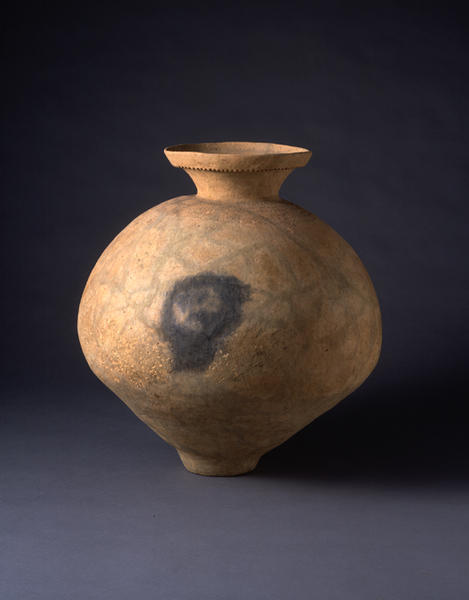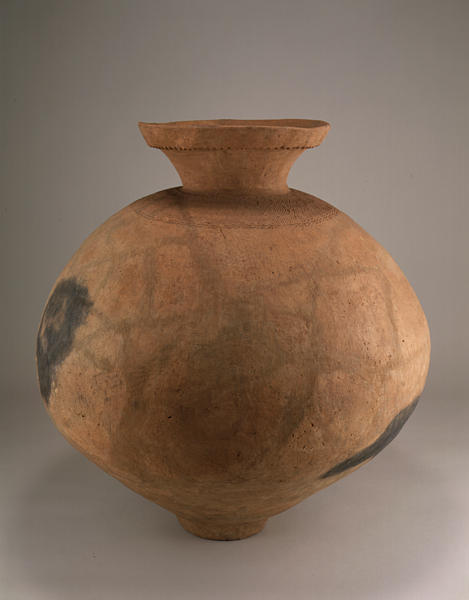Large Jar
- Japan
- Kofun period
- 4c
- Haji ware
- H-63.5 D-60
Catalogue Entry
The production of bisque-fired reddish brown earthenware, belonging to the Yayoi line stylistically, continued to be produced in the Kofun (Tumulus) period (300-710). This kind of earthenware produced in the Tumulus period through the Ancient period, is known as hajiki. This type of earthenware typically shows a round bottom and a paucity of ornamentation, yet, old hajiki may feature small flat bottoms often decorated with comb tooth patterns on the surface. These features of construction and in ornamentation make it difficult to discern old hajiki from Yayoi earthenware. The shape and size of hajiki is truly diverse, reflecting its versatile usage, including storing water and grains, cooking, and ritual and ceremonial use.
This large jar features a mouth that widely blooms outward, a fully rotund body, and a small flat bottom disproportional for the size of the jar. Tooth-like notches are cut at the lower edge of the mouth, and a belt of a combed mesh pattern surrounds the jar at its shoulder. No trace of vermilion is observed. It may be inferred that large jars of this sort produced from the late Yayoi period through the early Tumulus period were most likely used for storing food or religious rites. Glamorous silhouettes and scorching on the body is very attractive. The site of excavation of this piece is unknown.

